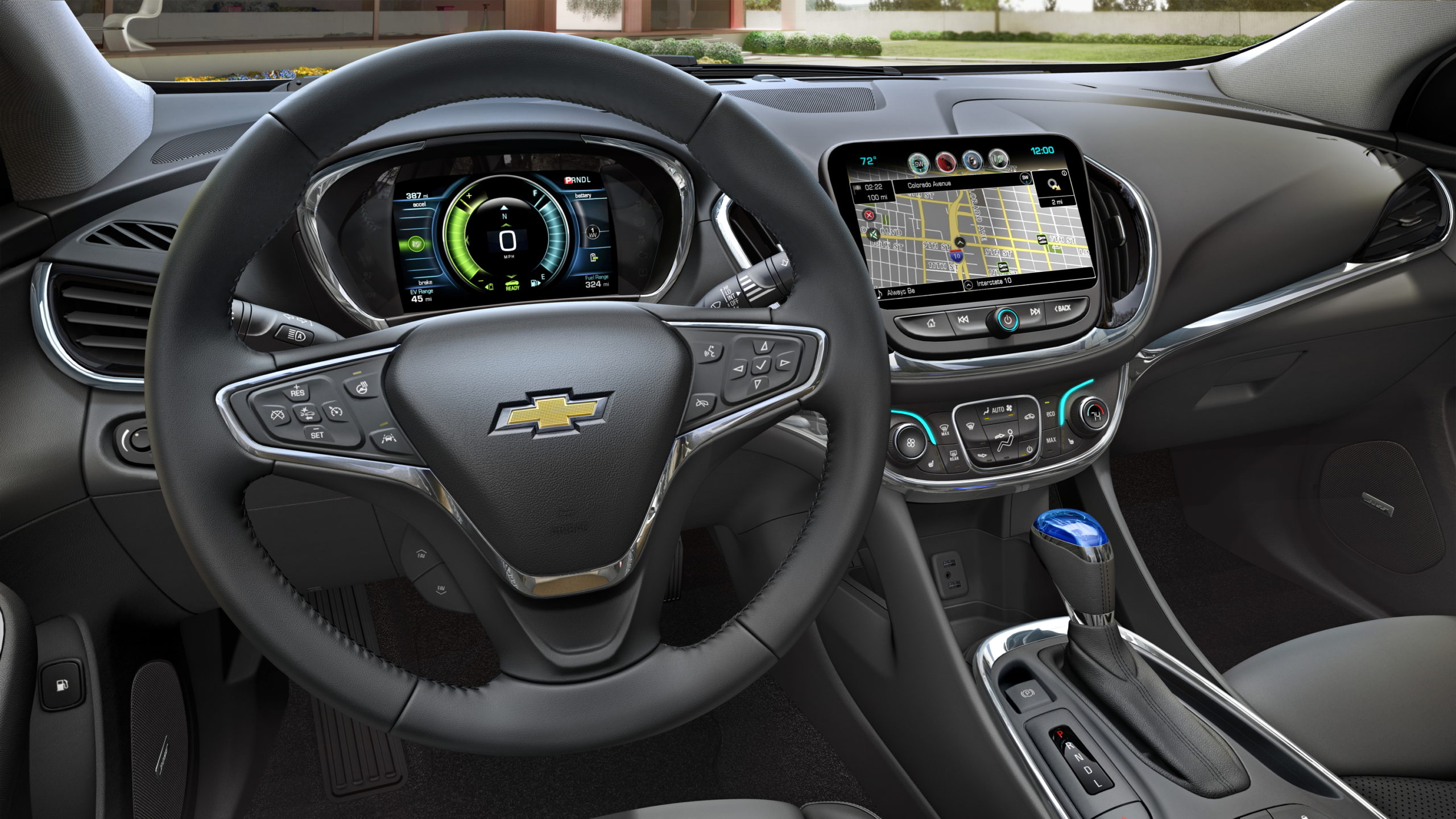With electrified vehicles having been on the road for more than a decade, there are plenty of used choices available for consumers looking for value. As an ongoing series, we’ll look back at various generations of battery electrics, PHEVs and hybrids to give you the information you need to make an educated choice. And check out The Charge’s Browse EVs for Sale page to find what you’re looking for.
Chevrolet introduced the Volt, its first plug-in hybrid, in 2012; the second and final generation came in 2016 and ran until its final year in 2019, when it was cancelled outright. This second gen brought better aesthetics both inside and out, an upgraded powertrain and longer all-electric range.

2019 Chevrlet Volt
When marketing the Volt, Chevrolet often referred to the car as a range-extended electric car. That was true, in a sense: Except in very specific circumstances, the Volt is driven exclusively by its electric motor, with the 1.5L four-cylinder gasoline engine generating electricity to power the motor after the battery’s plug-in charge is spent. In our opinion, though, the Volt is technically a plug-in hybrid because it derives most of its total driving range from gasoline power.
Specifications and energy consumption ratings
Chevrolet rated the Volt for 85 km of electric power on a full charge of its 18.4-kWh battery, and estimated its energy consumption at 2.2 Le/100 km. With the gas engine running, the Volt’s fuel consumption estimates are 5.5/5.6 L/100 km (city/highway). Even in its final year on the market, as a four-year-old design, the Volt boasted the second-best electric range of any plug-in hybrid, after the BMW i3, and out-ranked the Honda Clarity by a few kilometres.
The second-generation Chevrolet Volt’s powertrain generates 149 hp and 294 lb-ft of torque.

2019 Chevrlet Volt
Used pricing
Carfax Canada’s used value starting point for the Volt is the 2016 Premier model, which, as we write this, is worth an estimated $18,741. Carfax’s valuation for a 2019 Volt Premier is $28,480.
Trim levels and features
In 2016, Chevrolet offered the Volt in LT and Premier trim levels. Some highlights of the LT’s standard equipment list include 17-inch alloy wheels, LED low-beam headlights, heated side mirrors, automatic A/C, a digital gauge display, passive keyless entry, heated front seats/steering wheel, and an 8.0-inch infotainment touchscreen. Premier trim’s additions include an auto-dimming mirror, rear parking sensors, heated rear seats, leather upholstery, wireless phone charging, and an upgraded stereo.

2017 Chevrolet Volt
Premier trim options included a driver confidence package of blind spot monitoring, lane change alert, and rear cross-traffic alert. A Driver Confidence II upgrade added forward collision mitigation, lane keep assist, a following distance indicator, and automatic high beams. In 2017, Chevrolet added radar cruise control to the Driver Confidence II package, and in 2018, LT trim included the basic Driver Confidence package, an update that carried forward to the 2019 model.
Watch out for a “shift to park” error message
In the Volt, a ”shift to park” error can point to a few different faults, among them a faulty battery control module (which is pricey) or a more straightforward shift lever adjustment.

2017 Chevrolet Volt
It’s normal for the Volt’s engine to backfire
If you hear the sound captured in this video when driving a Volt, it’s caused by the engine backfiring, and it’s apparently normal for this car. You can read more about this phenomenon here.
There’s a software fix for a Volt phenomenon called the ‘chuggle’
“Chuggle” is the term Volt owners use to describe the way the car’s powertrain can surge under certain conditions when the engine is running.

2019 Chevrlet Volt
Finally, if your Volt rattles, you’re not alone
Another sound to listen for from the Volt’s rear end is the rattle owners discuss in this thread.
Safety ratings
The Insurance Institute for Highway Safety (IIHS) gave the Volt its top “good” rating in all of the organization’s small- and moderate-overlap front impact, side impact, and roof strength crash tests. The IIHS also rated the Volt’s full suite of collision mitigation features (some of which were optional) “superior.” The Volt’s basic headlights got an “acceptable” rating, while an optional headlight setup was rated “good.”

2017 Chevrolet Volt
From the U.S. National Highway Traffic Safety Administration (NHTSA), the Volt received five- and four-star ratings for driver and front passenger protection, respectively, in frontal crashes. The NHTSA gave the Volt five stars in all side-impact and rollover crash tests.
Recalls
Chevrolet issued two recalls for the Volt in 2018. One was part of a larger campaign affecting a total of nearly 20,000 General Motors vehicles to address the problem of air bubbles developing in the brake fluid. The other Volt recall dealt with faulty rear seatbelt retractors.






